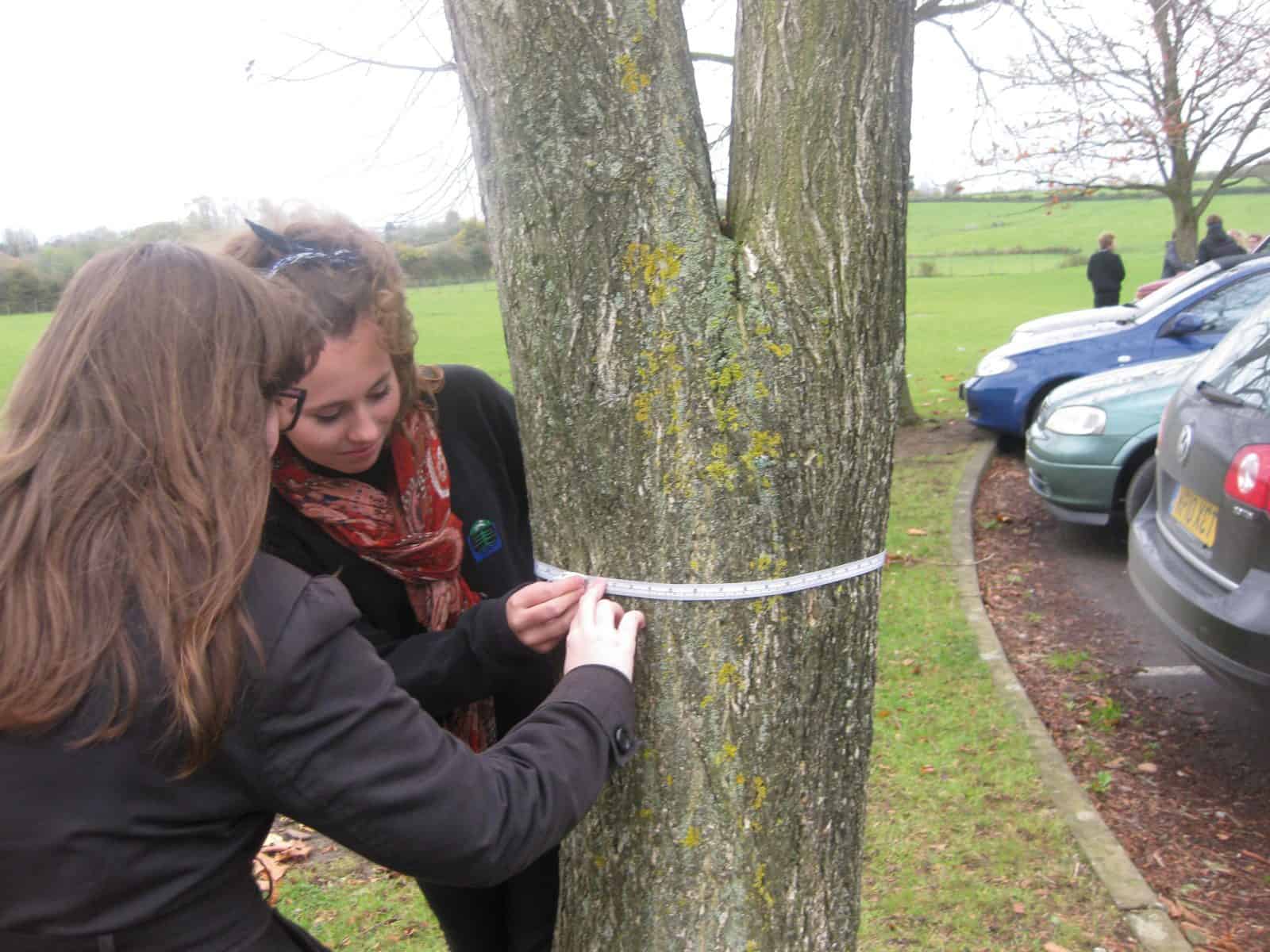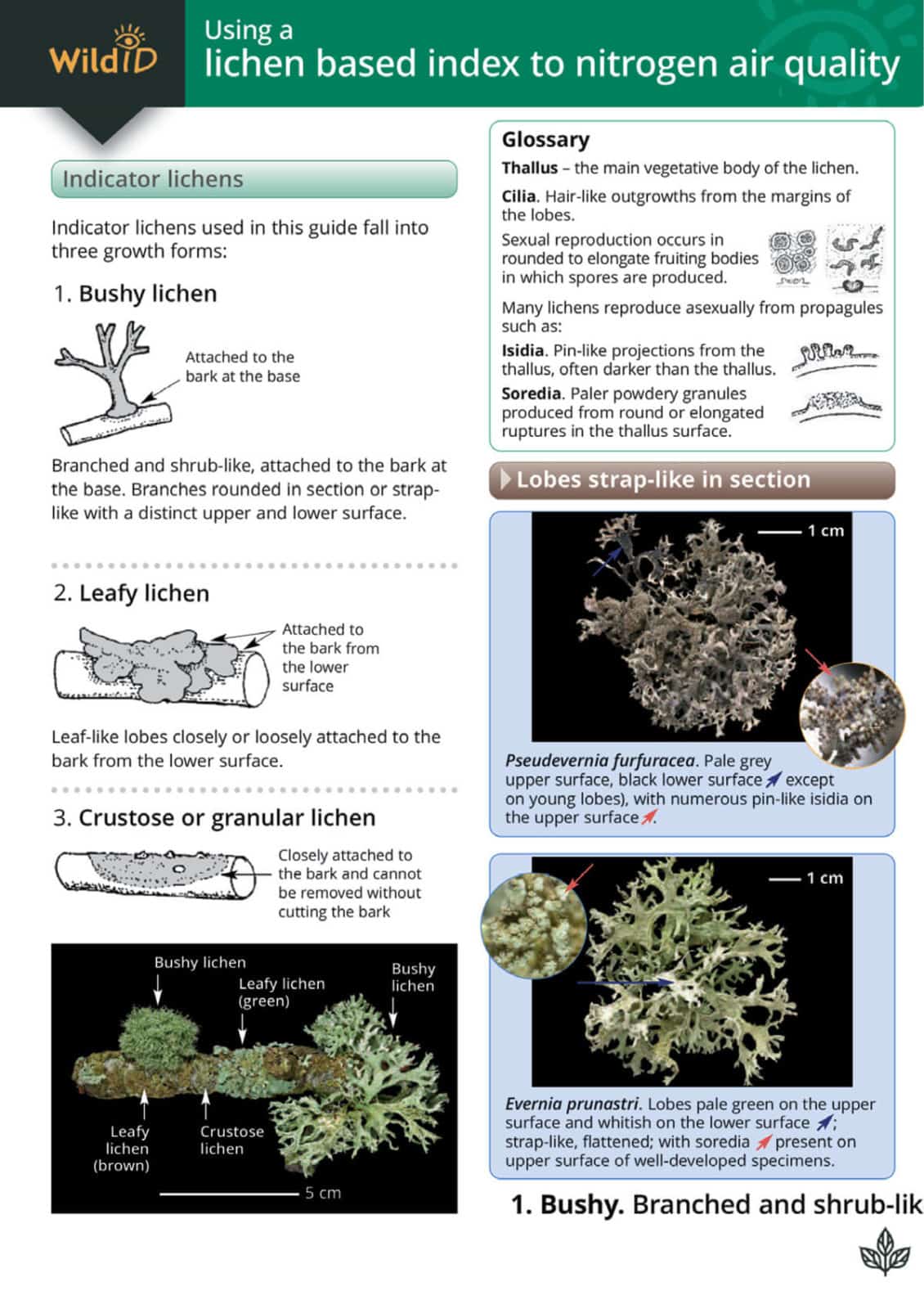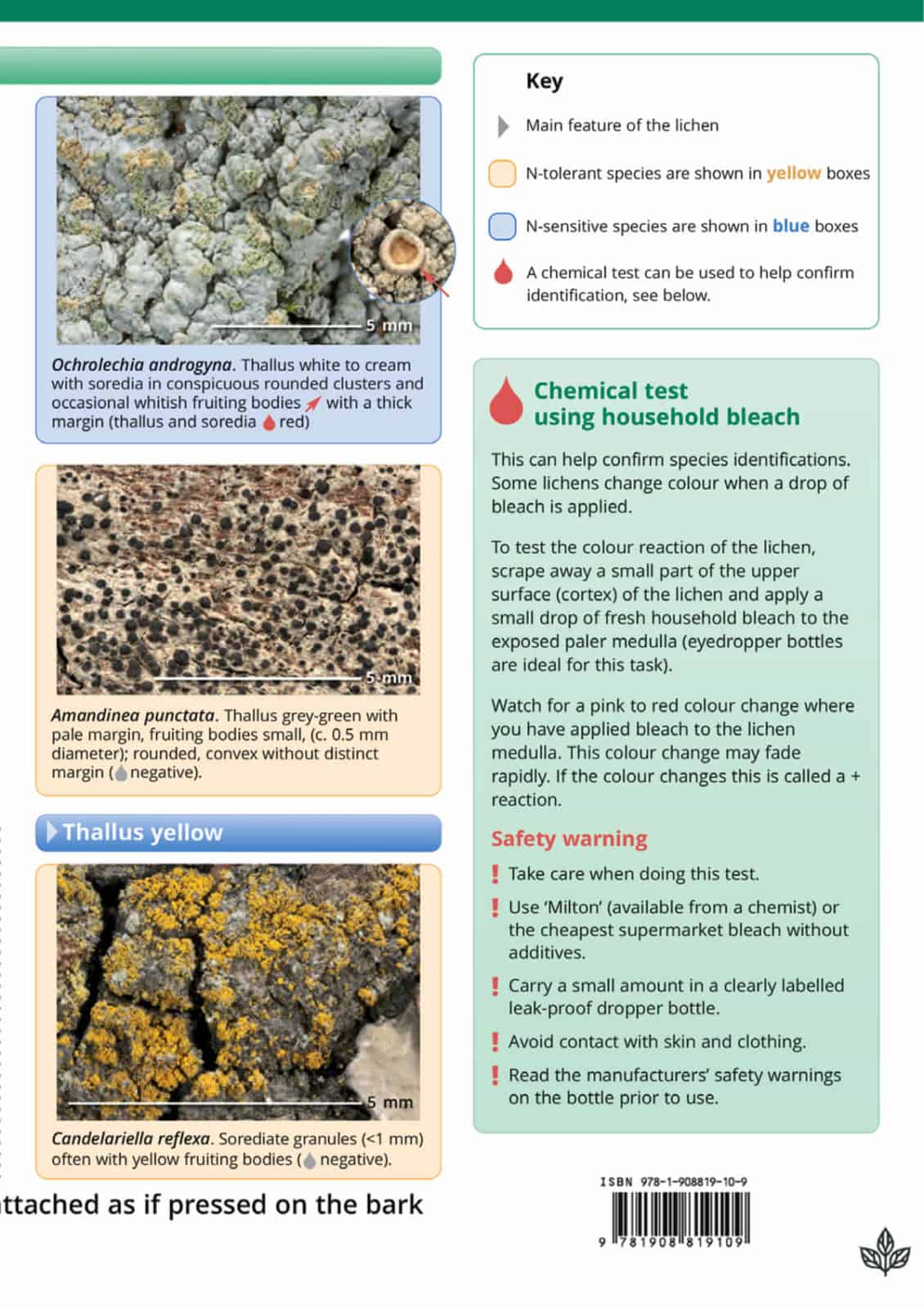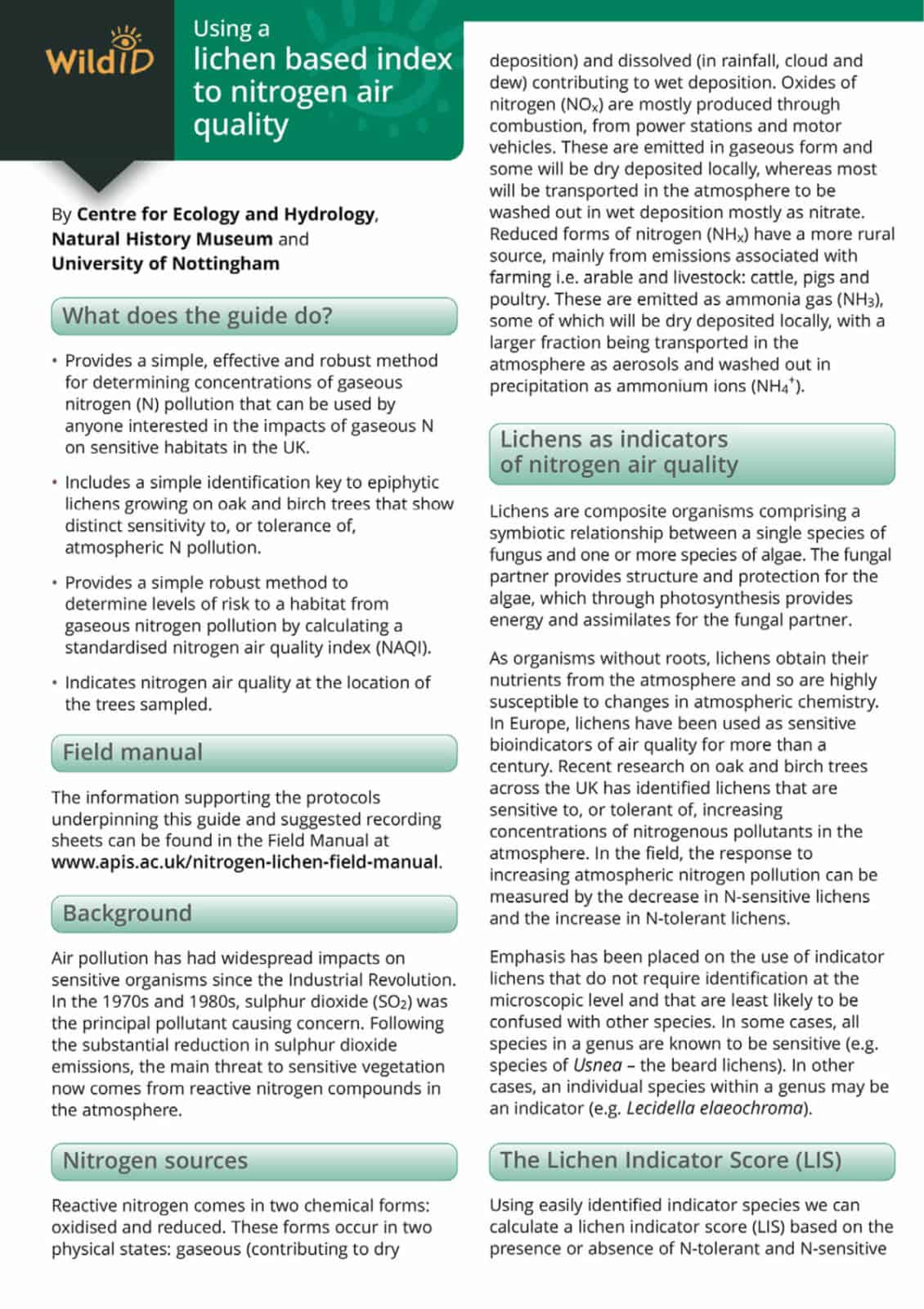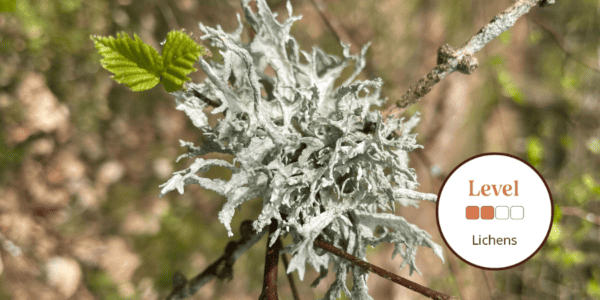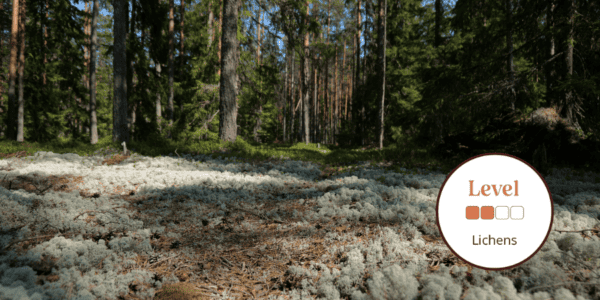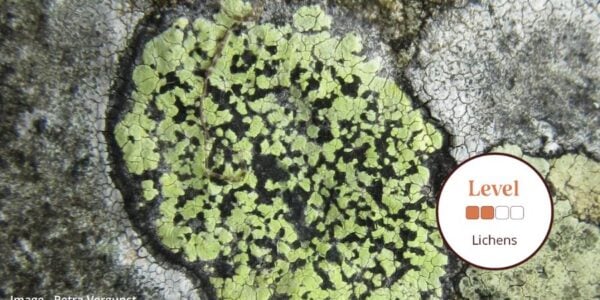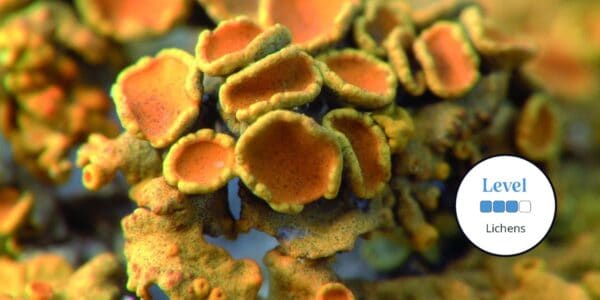Lichen based index to nitrogen air quality guide
The Lichen based index to nitrogen air quality guide features a straightforward key to lichens growing on oak and birch that you can use to assess local air quality, and how it has changed in recent decades.
Use the lichen species present at your location to calculate the lichen indicator score (LIS). Then convert this score into the nitrogen air quality index (NAQI) to show the nitrogen air quality at your location.
Lichens are composite organisms, made up of fungus and one or more algae living together. The algal partner produces essential nutrients through photosynthesis. At the same time, the fungal partner provides the body in which the algae live.
Lichens are highly sensitive to subtle changes in environmental conditions. So they are useful as natural indicators of the health of our environment. In the past sulphur dioxide from coal burning and industry was the main pollutant. It was a major cause of acid rain. But today nitrogen compounds from intensive farming and motor vehicle exhausts are becoming the main pollutant. Although pollutants can kill many lichens, other lichens tolerate, or even depend on them. This guide indicates which lichens are acid-tolerant and nitrogen-tolerant, and also which lichens grow in unpolluted sites. Recent research on oak and birch trees across the UK has identified lichens that are sensitive to, or tolerant of, increasing concentrations of nitrogenous pollutants in the atmosphere.
This guide was produced in partnership with Centre for Ecology and Hydrology, Natural History Museum and the University of Nottingham.

